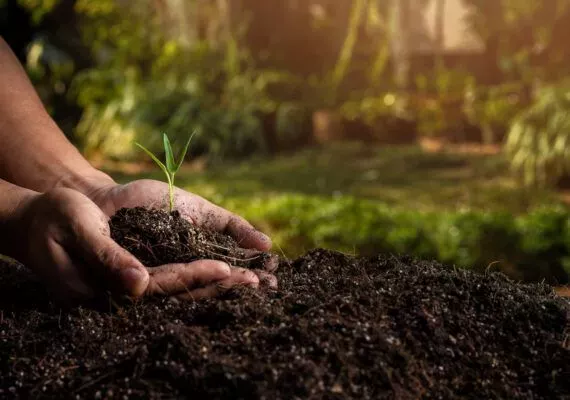
Soil Requirements for Cabbage
Cabbage is a vegetable that thrives best at temperatures ranging from 15 to 20 degrees Celsius. However, cabbage seedlings should grow at temperatures between 10 to 15 degrees Celsius. Cabbages are not afraid of frosts or freezing a few degrees below zero. However, if the cold is too severe during the seedling production stage, the plants will bolt prematurely.
Cabbage dislikes shade and requires ample sunlight. It also has high water requirements. It grows best in soils with high water retention capacity. Cabbage grows well in black soils, clayey and loamy soils, as well as improved peat soils. Soil reclamation is necessary for poorer soils.
Soil pH
The optimal soil pH for cabbage cultivation is 6.2–7.8. Since cabbage is very sensitive to improper soil pH, liming will be necessary. Granulated lime can be applied for this purpose. It is best done in spring, before planting cabbage in the field. The best results are achieved by applying lime fertilizer at a rate of 500 to 1000 kg per hectare of cultivation. Liming has a significant impact on cabbage cultivation.
Crop Rotation
Cabbage can be grown on the same plot once every 4 years. Crop rotation is necessary to protect crops from diseases and pest attacks. Cabbage is particularly sensitive to clubroot. Besides crop rotation, avoiding planting this plant on acidic and waterlogged soils can protect it from diseases.
Cabbage should not be grown after vegetables such as spinach, beets, rhubarb, and other cabbage crops. However, it can be planted after cereals, clover, and other leguminous plants.
Fertilization Requirements for Cabbage
Cabbage is one of the vegetables with the highest nutritional requirements. In contrast to potatoes, which have very low requirements in this regard. It is assumed that to achieve a yield of 70 tons of cabbage per hectare, the plant will uptake from the soil per hectare: 250 kg of nitrogen, 90 kg of phosphorus in oxide form, 300 kg of potassium in oxide form, 18 kg of magnesium in oxide form, and 350 kg of calcium in oxide form. Cabbage has a very high calcium requirement, which is present in the soil – for early varieties, it is 700–1200 mg/dm³, and for late varieties, it is 1000–1500 mg/dm³.
For cabbage to grow well, it needs constant access to easily absorbable nitrogen. Therefore, it is best to apply nitrogen in 3 doses in the form of ammonium nitrate. The first dose should be applied before planting the plants. Subsequent doses during cabbage growth. It is worth supplementing the crop with a multi-component fertilizer containing micronutrients, as their deficiency can affect the yield of this vegetable.
Planting Cabbage from Seedlings
This vegetable is grown from seedlings. Seed sowing begins at the end of January and ends in April, depending on the variety. Cabbage seedlings, which are properly prepared and suitable for planting in the field, are characterized by having well-developed 4 leaves, with the next 2 in the process of forming.
JWHAT ARE THE BEST VARIETIES OF CABBAGE FOR INDUSTRIAL CULTIVATION?
White cabbage has many varieties with different characteristics. For industrial cultivation, the following varieties are recommended:
- ’Flexton’ F1
- ’Adelco’ F1
- ’Professor’ F1
- ’Successor’ F1
- ’Novoton’ F1
- ’Kilaplon’ F1
- ’Zenon’ F1 and 'Storidor’ F1
- ’Flexton’ F1 is a cabbage variety that yields early and high yields. Its vegetative period is about 85–95 days. The heads reach a weight of about 6–7 kg.
- ’Adelco’ F1 is an excellent variety for processing. It has a strong root system and quickly forms heads. Additionally, it is resistant to diseases. It can be stored in the field without the risk of cracking. After a 90-day vegetative period, the cabbage of this variety weighs around 3 kg and is ready for harvest. However, if left in the field for 125 days, its head can weigh up to 8–9 kg.
- ’Professor’ F1 is a variety with a vegetative period of about 130–140 days. It grows quickly, and the head’s weight reaches 8–9 kg. The vegetables of this variety have a slightly flattened head and are quite resistant to diseases.
- ’Successor’ F1 has similar characteristics to 'Professor’ F1, but its vegetative period is 10 days shorter. It also achieves slightly smaller heads. Besides, it exhibits high disease resistance.
- ’Novoton’ F1 is a variety characterized by very high yields, producing up to 150–200 tons per hectare. This cabbage is very suitable for pickling and processing.
- ’Kilaplon’ F1 reaches a head weight of 7.5 to 9 kg. It is excellent for pickling, and its vegetative period lasts about 130–135 days. It is highly resistant to clubroot and can draw water from even small soil water reserves.
- ’Zenon’ F1 is a cabbage suitable for long-term storage. Its vegetative period is about 130–140 days. It provides stable and high yields on various soils. It is also suitable for processing industries.
- Storidor F1 is a cabbage variety that is very suitable for storage. It usually reaches a head weight of 2.5 to 3.5 kg. It yields well and is popular among farms supplying supermarkets.
Cabbage Care
Cabbage may suffer from diseases that can affect the entire plantation. Crop rotation helps protect against diseases, and in the event of disease occurrence, chemical plant protection measures must be applied. The most common diseases affecting cabbage crops include Alternaria leaf spot, clubroot, cabbage powdery mildew, downy mildew, and gray mold.
Cabbage plantations can also be attacked by pests. Non-compliance with crop rotation rules favors such situations. When they appear, it is necessary to apply chemical measures to control them. The most common pests attacking cabbage crops include greenhouse whiteflies, cabbage moths, cabbage aphids, and cabbage caterpillars.
Weed control in cabbage cultivation is also necessary. This is particularly important in the initial growth phase of the plant. Over time, as the heads begin to have large leaves, cabbage suppresses weeds with its mass and shades them.






